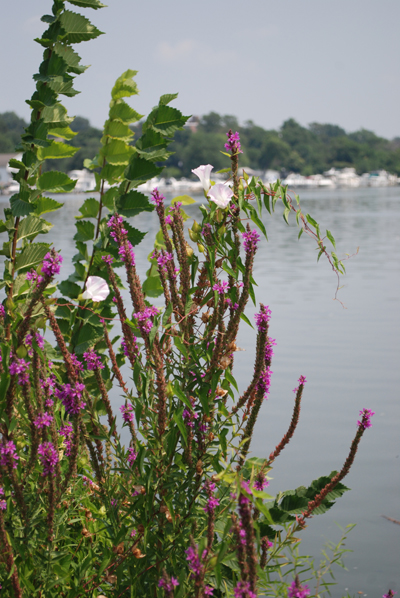|
You are viewing ARCHIVED content published online before January 20, 2025.
Please note that this content is NOT UPDATED, and links may not work. For current information,
visit https://www.nps.gov/aboutus/news/index.htm.

NPS / Miguel Marquez
Contact: Jenny Anzelmo-Sarles, 202-619-7177 WASHINGTON – The National Park Service has completed its planning process to help restore Anacostia Park’s wetlands, some of the last remaining tidal wetlands in our nation’s capital. Once implemented, this approach will result in thriving wetlands, a manageable Canada goose population and a healthier, cleaner Anacostia River ecosystem. Tidal wetland regeneration is critical to the overall rehabilitation of the Anacostia River ecosystem. The National Park Service hopes to rehabilitate healthy wetland systems that clean the water and provide food and shelter for native wildlife. A cleaner and healthier Anacostia Park and Anacostia River will also provide enhanced recreational opportunities for park visitors and area residents. Under the Anacostia Park Wetland and Resident Canada Goose Management Plan, the park may use several techniques to restore the tidal wetlands including reducing an overabundant resident goose population, managing invasive species, improving shoreline buffering and preventing erosion. It is likely that Anacostia Park’s wetlands have a viable seedbank, which could allow the wetlands to regenerate once the pressure from the goose population and invasive plants are reduced. The National Park Service will carefully monitor wetland regeneration and make adaptive management decisions based on its progress. The plan also includes education efforts related to no wake zones because waves can wash away new vegetation and cause erosion. To provide for successful wetland regeneration in Anacostia Park, the National Park Service must address the high numbers of resident geese that live in the park. The current population of resident, non-migratory Canada geese has and continues to strip vegetation from park wetlands, threatening the health and sustainability of the Anacostia River corridor. Canada geese are a native migratory species that have always been seasonal visitors to the D.C. area—stopping temporarily in local waters en route to summer breeding areas to the north or winter ranges to the south. A non-native subspecies of Canada geese were introduced in the mid-20th century for sport hunting. The availability of food and the lack of predators for these non-native geese has created an excessive non-migratory population of Canada geese, which places year-long stress on food sources, such as the Anacostia wetlands. The Canada goose population will be reduced through lethal control (capture and euthanasia) and reproductive control (egg oiling). These actions have been used by federal, state and local agencies for more than 15 years and have been proven to be the most effective and humane methods. The National Park Service plans to donate breast meat that is suitable for consumption to an organization(s) that helps those in need. All donated meat will be tested according to the proper protocols. The National Park Service, working with D.C.’s Department of Energy and Environment, the Anacostia Watershed Society, and other federal agencies and partners, will begin implementing the wetland management techniques outlined in the approved plan as soon as feasible. The National Park Service completed a management plan and environmental impact statement that presented a suite of possible techniques for wetland management and for resident Canada goose management. National Capital Regional Director Bob Vogel signed the Record of Decision (ROD) today selecting Alternative B. The entire plan/FEIS and ROD are available on the NPS Planning, Environment and Public Comment (PEPC) website. |
Last updated: June 29, 2016
